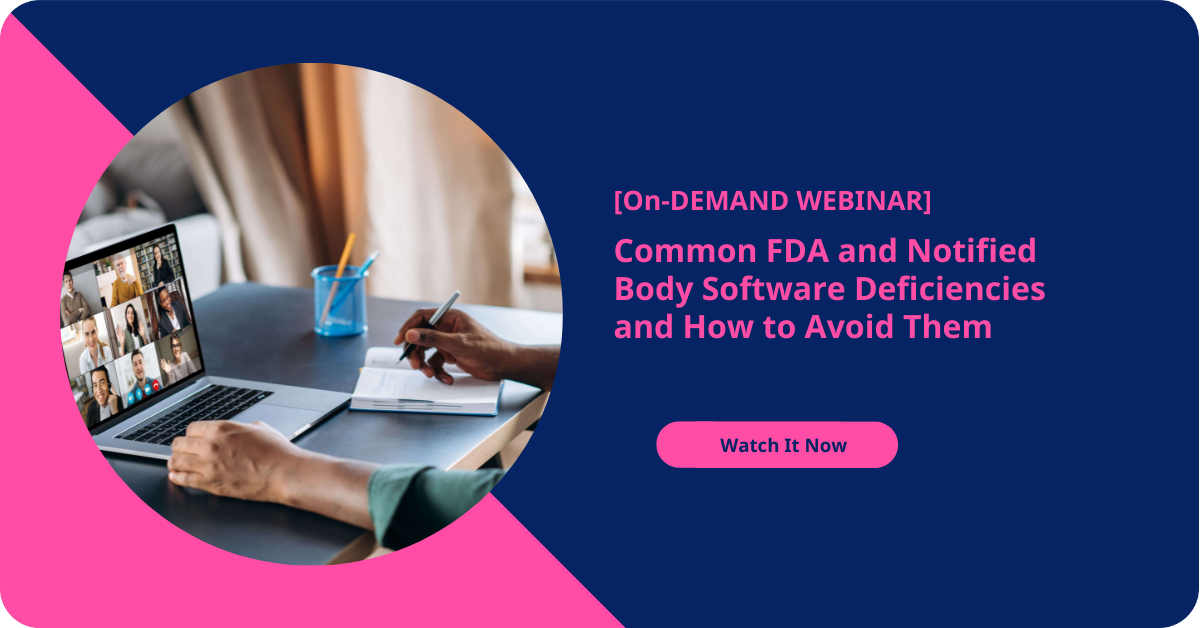As part of its commitment to shift to electronic submission, the Center for Devices and Radiological Health (CDRH) at the Food and Drug Administration (FDA) launched the Customer Collaboration Portal (CCP) in July 2022. The CCP allows medical device manufacturers to electronically submit and track the progress of certain types of eCopy and eSTAR submissions.
Once a submission has been formally received, manufacturers can track when the FDA’s responses or interactions are expected, the number of days the file has been under review, the number of days a submission has been on hold, reviewer details and more.
Based on our experience with the system so far, we’re optimistic about the potential to easily submit FDA files and make the FDA’s electronic submission process more efficient and streamlined.
eCopy Overview
Until recently, an eCopy was an electronic version of a medical device submission to be submitted on a CD, DVD or flash drive. A paper copy of the cover letter also had to be submitted with the electronic file. The formatting requirements for eCopy submissions can be confusing and rigorous. Failing to use the correct naming conventions, formatting or file size can result in a refusal to accept the file.
With eCopy, the FDA provided a validation module to help submitters avoid a hold due to administrative issues. The module aims to help companies ensure that naming conventions and file sizes conform to the requirements. Manufacturers that use eCopy can now submit files 100% electronically and track progress through the CCP. You can use the CCP to submit any type of eCopy file, including premarket submissions, pre-submissions, master files, Breakthrough Device designation requests and more.
eSTAR Overview
The eSTAR program is a voluntary electronic submission system that uses an interactive PDF template to guide medical device manufacturers through a De Novo or 510(k) submission (except for combination products). This template uses automation, guided content requirements, integration of multiple resources and automatic verification to ensure complete submissions. The content also aligns with internal review templates to make the process more efficient for reviewers. Check out the FDA guidance document for more details.
One of the most important takeaways from the guidance is as follows:
"FDA is identifying October 1, 2023, as the date on which the 510(k) electronic submission requirements will take effect. This date includes a transition period of a minimum of one year prior to the requirement that all 510(k) submissions be provided as electronic submissions."
Benefits of Using the CCP
Manufacturers can benefit from using the CCP for electronic submission in multiple ways.
Submission is efficient.
Using eCopy and eSTAR eliminates the requirement to create and mail CDs or flash drives to the FDA, which saves time and resources. With eSTAR, the requirement for multiple smaller PDF files is also eliminated. Manufacturers can now submit larger files and up to 100 attachments per section.
Alignment with internal reviewer smart templates also improves the efficiency of the overall process. This can provide an advantage for manufacturers using the eSTAR template over other submission options. Reviewers can also open files directly from the template for greater efficiency and organization.
Data will be complete.
The eSTAR system essentially forces you to enter all the required information before you are allowed to submit. One goal of the program is to remove the “Refuse to Accept” process and instead provide a technical screening to evaluate submission completeness. The technical screening, which is anticipated to occur within 15 days of submission, is intended to verify that responses accurately describe the device and that there is at least one relevant attachment for each required section. Device names and other repeated data also auto-populate throughout all documentation, reducing the chances of data entry errors. A verification section shows the completion status of each section, so you can fill in the gaps before submitting.
Confirmation is fast.
Electronic submissions can be received and formally acknowledged in a matter of hours, not business days. Electronic filing no longer relies on processing large volumes of paper files at the FDA’s Document Control Center.
Acceptance is guaranteed (for now).
For a limited time, the FDA is incentivizing manufacturers to use eSTAR by ensuring that files won’t be refused. This is significant because when the FDA refuses to accept a file, the submission process goes back to the beginning. Although you might experience a technical screening hold, the administrative requirements built into the template can help ensure that there are no missing files.
Best Practices for Using the CCP
Although we are still learning and the system is evolving, we have a few tips based on our experience so far.
Update to the latest version.
Versions are good for a limited time, and if the expiration date passes before you complete your submission, you might have to start over with the new version. The best way to avoid this is to always check to make sure you’re using the most current version.
Plan ahead.
The eSTAR template may look small at first, but it expands based on your inputs. Go through the system to answer as many questions as possible to see everything that is required for your device or system.
Double-check attachments.
Before submitting, make sure all of the attachments you reference are actually uploaded. Missing files may result in a technical screening hold that can delay your submission.
RQM+ Is Here to Help
The CCP — and especially the potential for eSTAR to be applied to all types of submissions — is a win-win for manufacturers and regulators alike. RQM+ is here to help with FDA submissions in any way your team needs support, including compiling data, populating files and helping you fill in the gaps.
We’re always looking for ways to share our unrivaled collective knowledge on submissions, including with our webinars. Sign up to access our on-demand webinar, “Common FDA and Notified Body Software Deficiencies and How to Avoid Them” for insights from our FDA experts.



